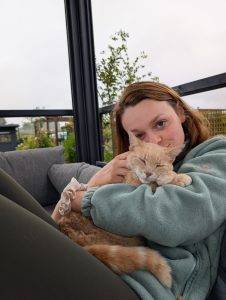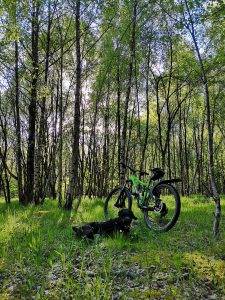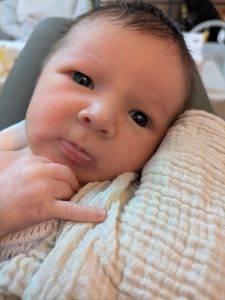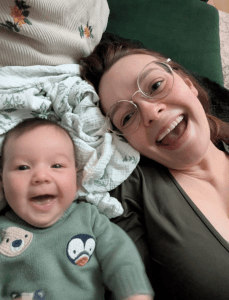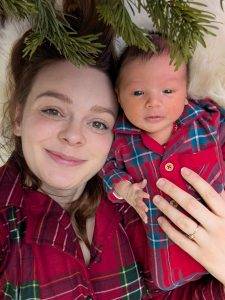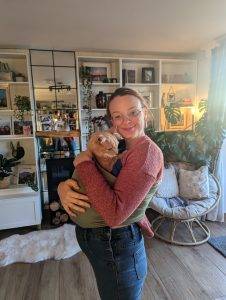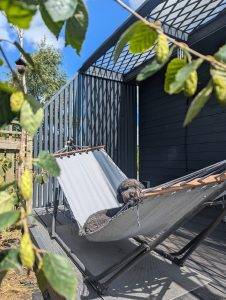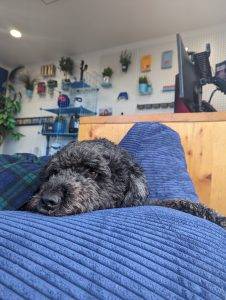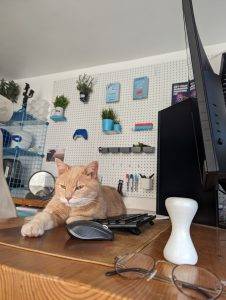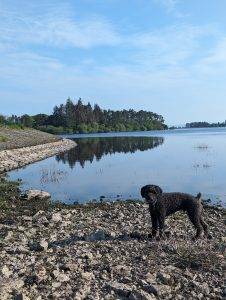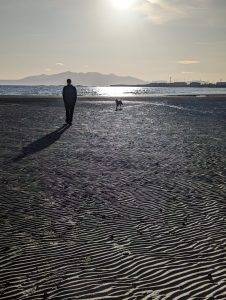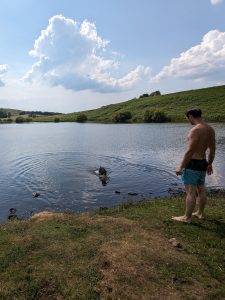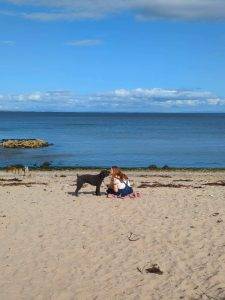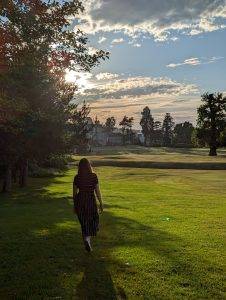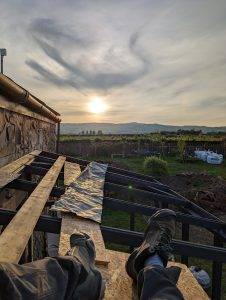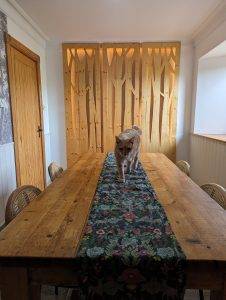One year ago I promised myself I’d write every week about turning my sidehustle into a 6 figure lifestyle business.
Whenever I felt like I was shouting into the void,
when I felt like I was wasting hours a day on writing for nothing,
When I felt like I was failing to convert my content into cash
I could refocus on my WHY:
I wasn’t doing this to sell courses or coaching,
I was doing this to help people.
So actually I was winning.
This promise has kept me going through the usual expected slumps of motivation and peaks of overwhelm
It’s been one year since the inaugural episode #1 of Life by Design.
It feels weird now to look back at my own promise 1 year ago.
Although I’ve made some adjustments along the way, I feel like I’ve been pretty true to my promise,
and to the motivations that started it all.
I’ve tried to be as honest as I can without oversharing,
as realistic as I can be without being condescending,
as practical as I can whilst still addressing abstracts like mindset.

A huge part of this has been sharing my own story, which is something I’ve never been comfortable doing.
But my story is not just my HOW, it’s my WHY too.
When people ask me what I do now,
it is getting harder and harder for me to give a clear answer…
I’ve been writing for 1 year.
A lot has changed.
Maybe it’s time to reintroduce myself and share my story again.
But, no this isn’t another manufactured rags to riches story for social media.
I hate those “overnight success stories” you see on Linkedin.
They get likes, But anyone with any marketing savvy can spot them from a mile away, And they reek of BS.
I never struggled to find enough money to eat,
I didn’t dramatically quit my job to pursue my dream with no money in the bank.
I had a good upbringing and a stable childhood,
I had the usual teenage angst but nothing unusual or extraordinary.
In fact my life has been perfectly ordinary.
But along the way I faced a mix of random chance, combined with choices which led me to where I am now.
The last few years I’ve been very fortunate.
If I could narrow down what limited success I’ve had in life,
it would be…
- Keep learning new skills in youth, and into adulthood
- Consistently repeating good habits.
- Occasionally making hard choices.
That’s all.
So I’ve been writing every day for one year now…
Here’s a snapshot of where my head’s at right now…
I’m sharing my story publicly to hold myself accountable.
I want to look back at this in 5 years and know that I was true to my self and my vision.
For now I’m still running Design Hero about 24 hrs a week.
Design Hero funds my lifestyle just fine.
Eventually Life by Design may be my primary income and primary work
For now it doesn’t make much money, except for some coaching which I enjoy.
But the goal isn’t money just now.
I know Life by Design is more scalable in terms of my time via digital products and freelance coaching.
It’s more rewarding than my client work.
I get to see the direct benefit on people I get to know as friends.
Everyone is selling something at the end of the day.
I’m giving away free resources for freelancers.
I hope that helps someone.
If I can sell something too I’m ok with that.
But if I ever use the high pressure sales tactics that some preach,
and that I’ve experienced myself,
then I have lost my way.
Life By Design, I haven’t 100% figured it out yet as it’s still a passion project that gives me purpose in my life.
I made a commitment to write every day for a year, sharing what I know about growing a solo business.
So that’s what I’m doing. Writing like a mofo. It helps me figure stuff out.
Whatever results from that will happen.
But I’m not setting any fixed targets around money, or followers or no of students.
What will be will be.
My goal would be to help freelancers escape the 9-5 where they are working like mad and earning less than a 9-5.
I want to help them design their lifestyle first and build a business around that, without all the burnout and pressure.
Over past few years I paid over £10k for courses and coaching about courses and coaching 🤣
I learned a lot.
But they all focus on selling courses and coaching, or social growth.
No-one is telling you how to actually get better at teaching people.
And I just don’t agree with a lot of the high pressure sales tactics promoted in a lot of these courses.
So I’ll need to learn how to be a better coach, and deliver better courses on my own.
The high-ticket coaches promoting high pressure sales?
Sure, they are all making huge £.
But now I see a rash of “high ticket” coaches and freelancers are burning out, quitting, miserable.
I’m glad I didn’t listen 😂
It reaffirms that my content about lifestyle is more important than content about growth and sales.
Even if it’s less attractive or harder to sell.
You can’t just keep handing out candy like crack.
Sometimes the people need to be forced to eat their veg.
I’d rather grow slower, and learn as I go, than sell out for a quick buck.
Purpose in my vision.
Consistency in my actions
Time on my side
Where I am now
Design Hero is fairly well systemized. It earns me a comfortable living and funds my lifestyle, It takes me about 4hrs a day to run my design business, which leaves times for my non-money making interests such as writing, gardening, and running Life by Design.
Now my mission is to help frantic freelancers to design their lifestyle then build a 6 figure business around it, without burnout.
I share the systems & strategies I used to redesign my ideal lifestyle & grow a 6 figure business that puts life first.
I now have more time to think, to make better decisions, to take care of myself, and to invest in leisure, reading or exploring with the dog.
If you’d like to learn more:
I have a coaching programme for freelancers that will give you all the tools, strategies, templates and systems I used to grew Design Hero from a sidehustle into a 6 figure lifestyle business on a 3 day workweek.
I’ll show you how to design your lifestyle first, then grow your solo business to support it.
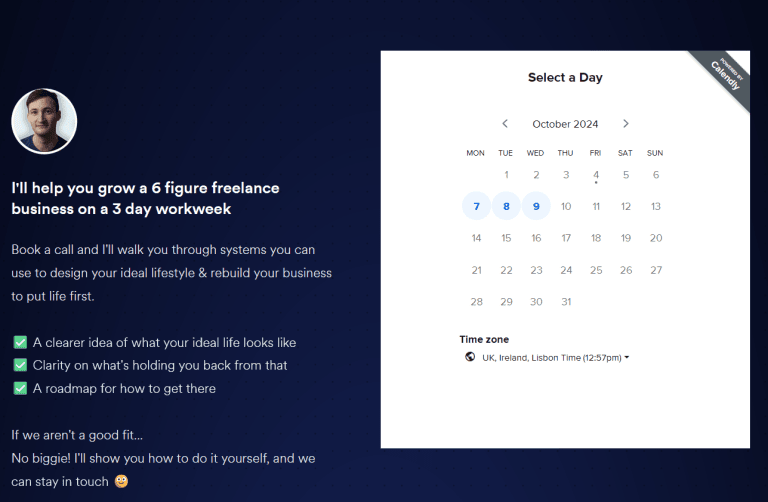
Free 30min Freelance business audit
Subscribe for instant access to a free 30min call, I'll audit your business and give you a roadmap to a 6 figure business.




